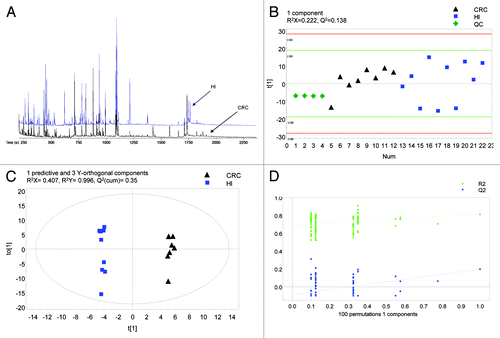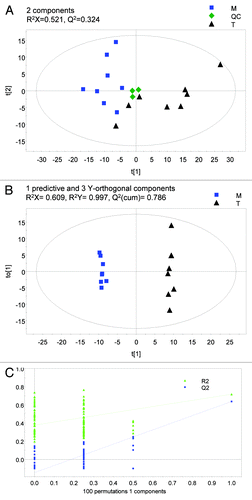Figures & data
Figure 1. Fecal metabonomic profile of CRC patients and healthy subjects. (A) Typical GC/TOFMS chromatograms of fecal specimens from a CRC patient and a healthy subject (Hl). (B) PCA model 2 differentiating CRC patients from healthy subjects (Hl). (C) OPLS-DA model 2 differentiating CRC patients from healthy subjects (Hl). (D) Validation plot of OPLS-DA model 2.

Table 1. Performance statistics of models 1 (all samples included) and 2 (fecal samples containing blood beyond 1 mg Hb/g stool excluded)
Table 2. Fecal and tissue marker metabolites characterizing CRC
Figure 2. Tissue metabonomic profile of tumor tissue and matched normal mucosae. (A) PCA scores plot discriminating CRC tumor (T) from matched normal mucosae (M). (B) OPLS-DA scores plot discriminating CRC tumor (T) from matched normal mucosae (M). (C) Validation plot of OPLS-DA model.

